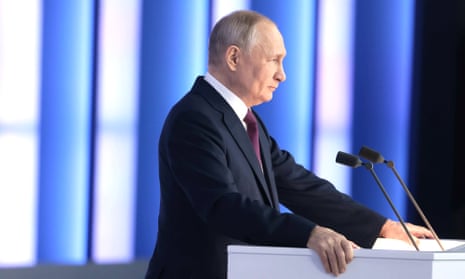The article gives an overview of the New START treaty, which Russia and the United States signed in 2010. It emphasises how the treaty restricts the number of nuclear weapons that the two countries can own and use.

New START Treaty
- The New Strategic Arms Reduction Treaty (New START) agreement, which limits the number of deployed nuclear warheads, missiles, and bombers, is set to expire in 2021 unless renewed.
- The treaty limits the United States and Russia to a total of 1,550 deployed nuclear warheads and 700 deployed missiles and bombers, which is significantly lower than the Cold War caps.
- Former US President Barack Obama and then-Russian President Dmitry Medvedev signed it in 2010.
- It is one of the most important constraints on the deployment of nuclear weapons by superpowers.
The History of US-Russia Nuclear Relations
- The United States has formally withdrawn from the Intermediate-Range Nuclear Forces Treaty (INF)
- The agreement required the two countries to eliminate all ground-based missiles with ranges of 500 to 5,500 kilometres.
When did the process of nuclear disarmament begin?
- The two countries began arms control talks on three fronts in 1985.
- The first dealt with strategic weapons with ranges greater than 5,500 kilometres, leading to the START treaty in 1991.
- Both sides were limited to 1,600 strategic delivery vehicles and 6,000 warheads.
- A second track dealt with intermediate-range missiles, which resulted in the 1987 INF Treaty.
- A third track, Nuclear and Space Talks, was intended to address Soviet concerns about the United States’ Strategic Defense Initiative (SDI), but it produced no results.
The Success of INF
- Despite the fact that no nuclear warheads were dismantled, the INF Treaty was hailed as a great disarmament treaty.
- Other countries were not restricted because it was a bilateral agreement.
- The INF was in place by 1991. The USSR destroyed 1,846 Pershing and cruise missiles, while the US destroyed 846.
- Associated manufacturing facilities were also shut down.
- The INF Treaty was the first to include stringent verification measures, such as on-site inspections.
How has the nuclear behavior been?
- With the end of the Cold War and the disintegration of the Soviet Union in late 1991, former Soviet allies joined NATO and became EU members.
- To maintain its technological lead, the United States was investing in missile defence and conventional global precision strike capabilities.
- The United States announced its unilateral withdrawal from the 1972 Anti-Ballistic Missile Treaty in 2001. (ABM Treaty).
- The US also blamed Russia for failing to meet the Comprehensive Test Ban Treaty’s ‘zero-yield’ standard (CTBT). This could signal the start of a new nuclear arms race.
Implications of the New Beginning
- The New START Act of 2011 expired in 2021. It could follow in the footsteps of the INF Treaty.
- The 2018 Nuclear Posture Review called for the development of new nuclear weapons, including low-yield weapons.
- With its nuclear force goals in mind, China is preparing to run its test site all year.
- CTBT requires ratification by the United States, China, Iran, Israel, and Egypt, as well as adherence by India, Pakistan, and North Korea. It is unlikely to be implemented.
@the end
- A new nuclear arms race could be just the start. Because multiple countries are involved, it may become more complicated.
- Technological advancements are bringing the cyber and space domains into conflict. It increases the likelihood of an escalation.
Source: https://indianexpress.com/article/explained/explained-global/russia-suspends-new-start-what-is-its-last-remaining-nuclear-arms-treaty-with-us-8458806/
